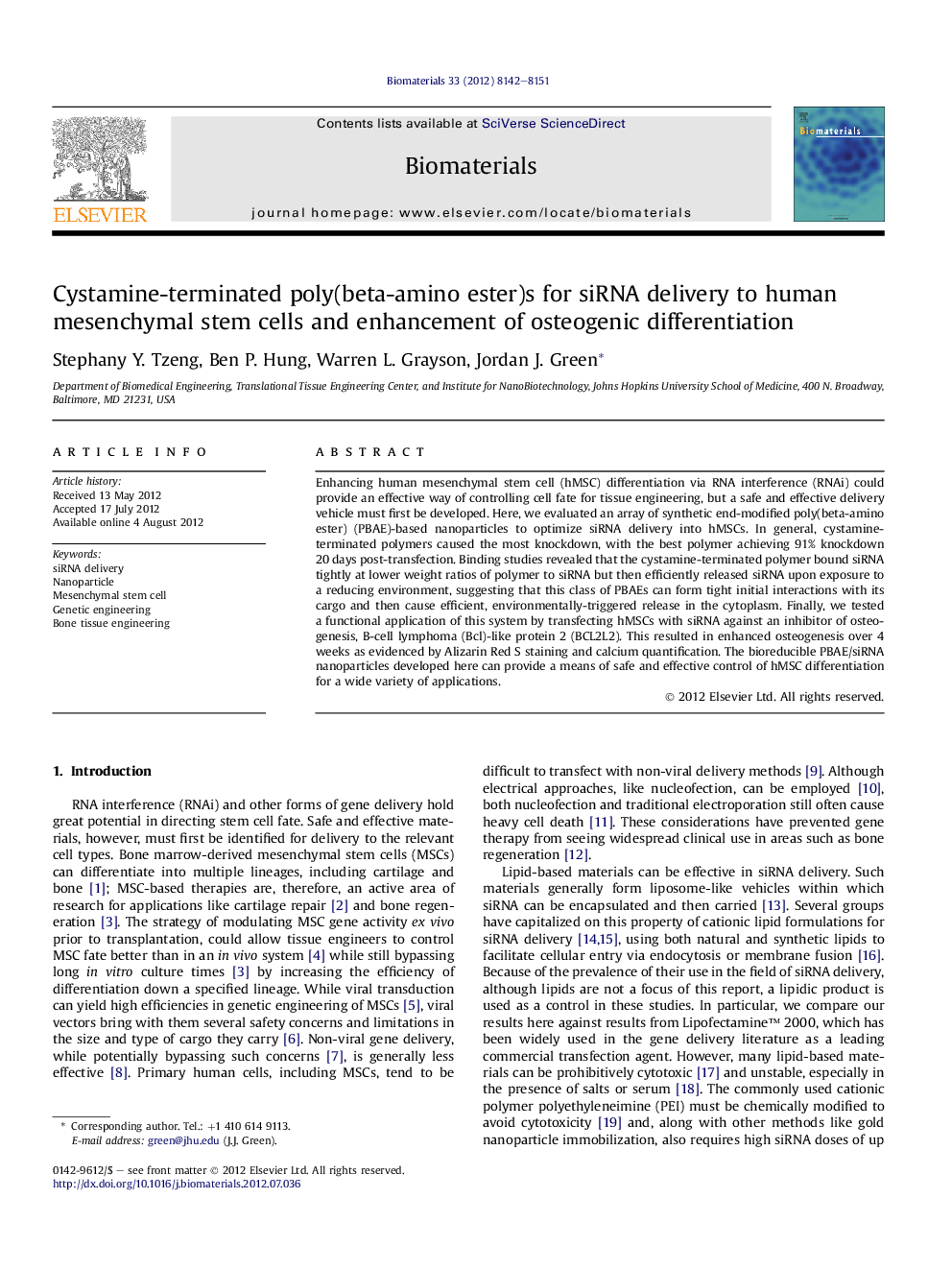| Article ID | Journal | Published Year | Pages | File Type |
|---|---|---|---|---|
| 10229115 | Biomaterials | 2012 | 10 Pages |
Abstract
Enhancing human mesenchymal stem cell (hMSC) differentiation via RNA interference (RNAi) could provide an effective way of controlling cell fate for tissue engineering, but a safe and effective delivery vehicle must first be developed. Here, we evaluated an array of synthetic end-modified poly(beta-amino ester) (PBAE)-based nanoparticles to optimize siRNA delivery into hMSCs. In general, cystamine-terminated polymers caused the most knockdown, with the best polymer achieving 91% knockdown 20 days post-transfection. Binding studies revealed that the cystamine-terminated polymer bound siRNA tightly at lower weight ratios of polymer to siRNA but then efficiently released siRNA upon exposure to a reducing environment, suggesting that this class of PBAEs can form tight initial interactions with its cargo and then cause efficient, environmentally-triggered release in the cytoplasm. Finally, we tested a functional application of this system by transfecting hMSCs with siRNA against an inhibitor of osteogenesis, B-cell lymphoma (Bcl)-like protein 2 (BCL2L2). This resulted in enhanced osteogenesis over 4 weeks as evidenced by Alizarin Red S staining and calcium quantification. The bioreducible PBAE/siRNA nanoparticles developed here can provide a means of safe and effective control of hMSC differentiation for a wide variety of applications.
Related Topics
Physical Sciences and Engineering
Chemical Engineering
Bioengineering
Authors
Stephany Y. Tzeng, Ben P. Hung, Warren L. Grayson, Jordan J. Green,
